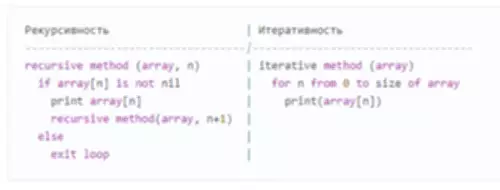Data persistence means the info stays even after the containers have been rescheduled or destroyed. Docker Daemon processes any task despatched by the Docker Shopper after being acquired over the Docker API. It presently runs solely on Linux because it depends on a number of Linux kernel options.
Steady Integration And Steady Deployment (ci/cd)

Now let‘s explore a typical development scenario – interacting with databases. Docker Swarm steps in as your reliable organizer, making sure all of your https://deveducation.com/ containers are in the right place and working properly together. Docker permits you to move your app from one system to another without breaking anything.
Moreover, there are some scalability, networking, and security issues. For instance, Kubernetes clusters can get advanced and susceptible. If a single cluster is compromised, other clusters can become weak. A Docker registry is a scalable service for hosting, storing, and distributing Docker pictures. This registry can host public or personal Docker pictures in the cloud or on-premises. In addition, they contain all of the versions of Docker images which were pushed to the registry.
Isolated And Safe Software Structure
The container talks to the host OS by way of the Docker daemon, providing you with some flexibility in your setup. In the tip of the build process, Docker creates a new empty layer on high of all layers referred to as thin writable layer. This way you presumably can carry out interactive changes in the picture and commit these utilizing docker commit, identical to you’d do with a Git tracked file. A key good factor about Docker is definitely spinning up databases, caches, queues and providers for app testing without needing to put in advanced servers in your machine. Unlike monolithic apps, containers isolate software program dependencies into self-contained units that permit operating multiple versions side-by-side.

Docker is a containerization expertise that gives a constant and efficient approach to package deal, distribute, and run software program functions. It permits builders to encapsulate their purposes along with their dependencies into isolated containers. These containers are totally self-contained and have every little thing wanted to run the appliance, together with the code, runtime, system tools, libraries, and settings. Docker permits developers to construct, ship, and run applications on any infrastructure seamlessly.
This standardisation was the key to the success of transport containers. After all, if one company’s containers did not match on one other firm’s ship, truck, or freight train, they could not be correctly transported. Every firm would wish its own fleet of containers to have the ability to send issues to each of their clients – which might be an operational nightmare.
- Builders get pleasure from elevated performance and fewer overhead when it comes to constructing, testing, and deploying functions.
- Simply put, Docker daemon manages containers through the use of Docker photographs.
- It’s attainable to create containers from scratch with commands like chroot.
- However for the added benefit of having the ability to take the identical container you employ in development and deploy it in production, it’s a fairly fair tradeoff.
These environments both have the libraries or tools required by the app or run the software model that the app is appropriate to run on. No, Docker uses containers, which share the host OS kernel, making them light-weight. VMs emulate hardware, requiring separate OS instances, making them heavier.
Dig Deeper On Containers And Virtualization
While Docker can be utilized without Kubernetes, Kubernetes depends on Docker to run containers. Docker is an open-source platform that automates the deployment, scaling, and management of functions. It allows builders to package functions into standardized models called containers.
Containers clear up this downside by packaging an utility and all its dependencies like libraries, frameworks, and configuration information right into a single, standardized unit. This ensures that the applying runs the identical no matter where it’s deployed, whether in your laptop computer, a server, or in the cloud. Docker pictures are read-only information with directions for creating Docker containers. In simpler why docker is used terms, it’s like a blueprint that tells the Docker daemon what surroundings to run.
Docker containers can work on a quantity of platform types i.e. they are platform-agnostic. An app behaves the identical whether or not they are deployed on your local server or in the cloud. Docker Hub is a cloud-based service to store and share Docker images (used to create containers with every little thing an app needs). You can push your individual photographs or pull photographs shared by others in Docker Hub. Docker Engine is responsible for managing all of the interactions between containers, pictures, and the host system. Imagine you could have a web utility with a frontend, backend, and database.
This allows you to drop into a shell by working docker exec -it my-container sh. You Will see output in your terminal as Docker runs every of your instructions. This will begin a new container with the essential “hello-world” picture. Through my SEO-focused writing, I wish to make advanced subjects simple to grasp, informative, and efficient.
When you launch a new container from the same picture, it’ll start from scratch. Make sure the file is saved someplace accessible on your host machine, ideally in the same folder as your project. For this example, we’ll assume the file is named greens.csv.
